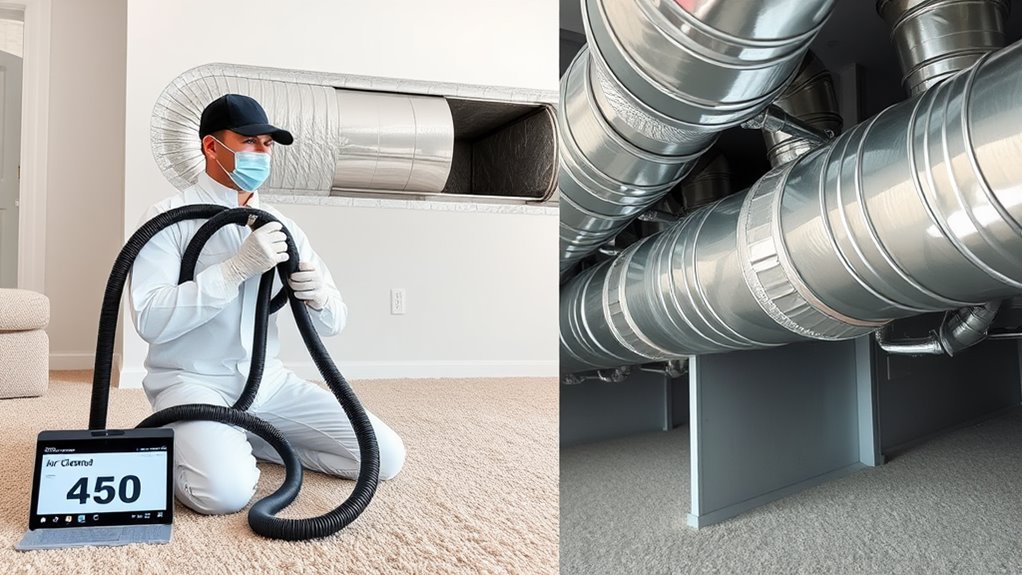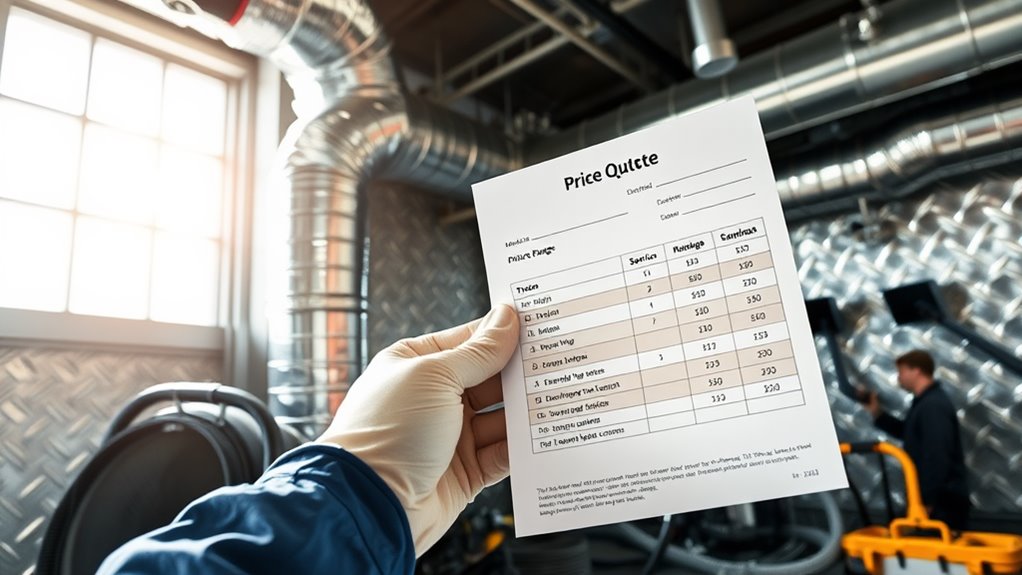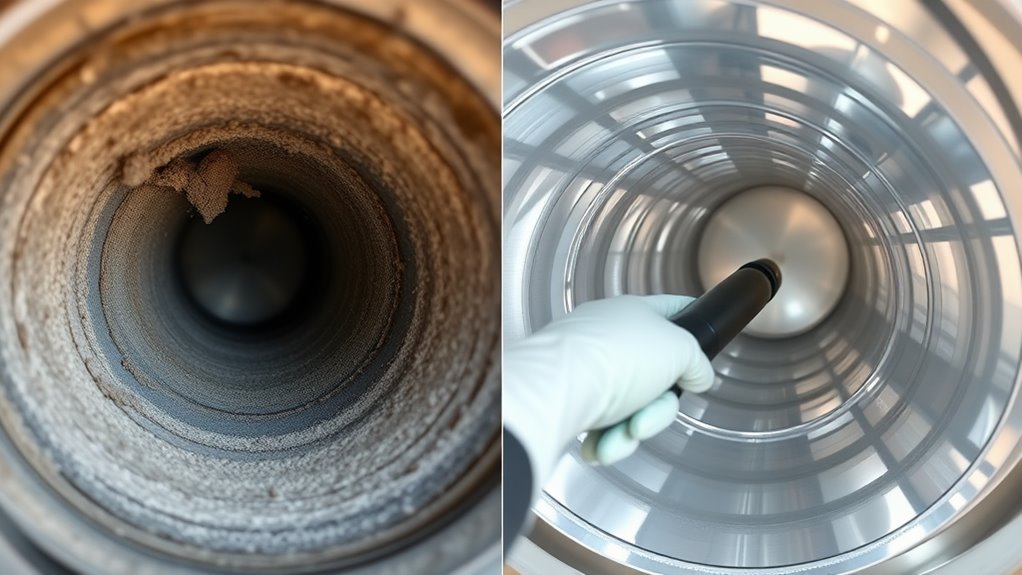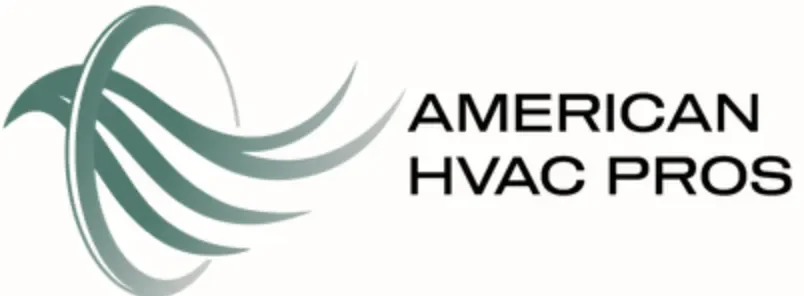You'll typically pay between $275 and $500 for professional air duct cleaning services, with a national average of $375. Your final cost depends on your home's size, duct accessibility, and contamination level. Metropolitan areas command 20-30% higher rates than rural locations. While DIY cleaning costs $500-$1,000 in equipment, professional services offer specialized tools and expertise. Understanding the full scope of services and potential hidden fees will help you make an informed decision.
Average Air Duct Cleaning Costs Nationwide

Homeowners across the United States can expect to pay between $275 and $500 for a professional air duct cleaning service, with the national average hovering around $375. This average pricing typically includes cleaning of all supply and return vents, main ducts, and the HVAC system's main trunk lines.
You'll find significant regional variations in these costs, with prices in metropolitan areas often running 20-30% higher than in rural locations. The size of your home and number of ductwork access points will impact the final cost. A single-story 2,000-square-foot home might cost $350 to clean, while a three-story 4,000-square-foot residence could reach $700 or more. Supplementary factors affecting your total expense include system accessibility, contamination level, and the presence of special conditions like mold or rodent infestations.
Key Factors That Affect Service Pricing
The cost of your air duct cleaning service depends primarily on three critical factors: your HVAC system's size, the extent of contamination present, and the location and accessibility of your ductwork. Your system's size directly impacts labor hours and equipment requirements, while the contamination level determines the intensity of cleaning needed. The location of your ducts and their accessibility can greatly affect the complexity of the job, potentially requiring specialized equipment or supplementary labor to reach difficult areas.
Size of HVAC System
One primary factor determining air duct cleaning costs is your HVAC system's size, which professionals measure by the number of supply and return vents, square footage coverage, and system complexity.
Larger homes typically require more extensive ductwork networks, which directly impacts cleaning time and labor costs. You'll find that a system serving a 3,000-square-foot home will cost considerably more to clean than one in a 1,200-square-foot residence. The duct size itself also influences pricing, as wider ducts require specialized equipment and more thorough cleaning processes to maintain system efficiency.
Multi-story homes with complex configurations often have extra zones, dampers, and access points that technicians must address. Each extra vent or return adds to the general scope, requiring more time and resources to properly clean and inspect.
Contamination Level Assessment
Beyond system dimensions, contamination severity plays a major role in determining your air duct cleaning costs. Professional technicians will conduct a thorough assessment using specialized inspection tools to evaluate contamination types and determine the level of cleaning required.
- Visual inspection using high-resolution cameras to identify dust accumulation, mold growth, or pest infestations
- Air quality testing to measure particulate concentrations and identify airborne pollutants
- Surface sampling to detect microbial contamination and analyze debris composition
- Moisture readings to assess conditions conducive to mold growth
- Video scoping to examine hard-to-reach areas and document contamination extent
The assessment methods used will help determine the cleaning approach needed, equipment required, and time investment necessary. You'll find that heavily contaminated systems typically command higher service rates due to the increased labor and specialized cleaning protocols required.
Location and Accessibility
While system contamination impacts cleaning costs markedly, location and accessibility of your HVAC components can substantially influence service pricing. Duct location plays an essential role – systems installed in crawl spaces, attics, or behind walls typically cost more to clean than those in easily accessible basements. You'll pay premium rates if technicians need specialized equipment or extra time to reach your ducts.
Accessibility issues that affect pricing include the presence of built-in cabinetry, finished walls covering duct access points, or complex architectural features blocking direct entry. If your ducts require removing obstacles or creating temporary access points, labor costs will increase. Furthermore, multi-story buildings present unique challenges, as technicians must transport equipment between floors and coordinate cleaning operations across different levels.
Signs Your Air Ducts Need Professional Cleaning
Recognizing the right time to clean your air ducts can prevent costly repairs and maintain ideal indoor air quality. If you've noticed persistent dust buildup despite regular cleaning, it's time to evaluate professional duct cleaning services.
- Visible mold growth around vents or duct surfaces
- Excessive dust particles floating in the air or settling quickly on surfaces
- Musty odors when your HVAC system operates
- Increased allergy symptoms or respiratory issues among occupants
- Unexplained spikes in energy bills despite normal usage
When you observe these signs, don't wait to schedule an inspection. Professional cleaning removes accumulated debris, mold spores, and contaminants that compromise your system's efficiency. Your HVAC system will operate more effectively, and you'll experience improved air flow throughout your home, leading to better temperature control and reduced energy consumption.
Understanding Price Quotes and Service Packages

Before committing to any air duct cleaning service, you'll need to understand how companies structure their pricing and package options. Most providers offer tiered packages ranging from basic cleaning to extensive services that include sanitization, deodorizing, and mold remediation.
When reviewing quotes, you'll notice variations based on your home's square footage, duct accessibility, and system complexity. Service transparency is vital – legitimate companies will provide detailed breakdowns of included services, equipment used, and time estimates. During price negotiation, ask about extra fees for extra vents, corner brushing, or sanitizing treatments.
Don't automatically choose the lowest bid. Instead, compare the scope of work across different providers and verify the quote includes post-cleaning inspection and guarantee terms. Request written estimates that clearly outline all services and associated costs.
DIY Vs Professional Cleaning Cost Comparison
When considering DIY duct cleaning, you'll need to invest in specialized equipment like vacuum systems and rotary brushes, which can cost $500-$1,000 upfront. Your time investment of 8-10 hours for a thorough cleaning, valued at typical hourly rates, plus the learning curve must be weighed against a professional service's $300-$700 fee. While DIY cleaning may seem cost-effective initially, professional services often prove more economical long-term due to their advanced equipment, expertise, and ability to identify potential issues that could lead to costly repairs.
Equipment and Supply Costs
The cost difference between DIY air duct cleaning and professional services hinges primarily on equipment investments. When considering equipment types and supply sources, you'll need to factor in both initial purchases and recurring supplies.
- Professional-grade vacuum system: $500-$1,500
- Rotating brush system with extension rods: $150-$300
- HEPA filtration attachments: $100-$200
- Inspection cameras and tools: $75-$250
- Cleaning solutions and sanitizers: $30-$60 per cleaning
You'll find that professional companies spread these equipment costs across hundreds of jobs, while DIY requires a significant upfront investment. Consider renting specialized equipment from hardware stores to reduce initial costs. However, be aware that consumer-grade equipment often lacks the power and efficiency of professional tools, potentially affecting the cleaning quality.
Time and Labor Expenses
Since labor costs represent a significant portion of air duct cleaning expenses, understanding the time investment for both DIY and professional approaches is essential. Professional cleaners typically complete a whole-house duct cleaning in 3-5 hours, thanks to their labor efficiency and specialized equipment. You'll pay $50-$100 per hour for their expertise.
If you're addressing the job yourself, expect to spend 8-12 hours on a DIY cleaning project. While you'll save on labor costs, your time management becomes vital. You'll need to account for setup, cleaning each vent, accessing difficult areas, and proper cleanup. The learning curve can extend the project duration, especially if you're unfamiliar with your duct system's layout. Consider whether the time investment justifies the potential savings compared to hiring professionals.
Long-term Financial Impact
Making an informed decision between DIY and professional air duct cleaning requires careful analysis of long-term costs and benefits. While DIY methods might save you money initially, professional services often deliver superior long-term value through increased energy savings and health benefits.
- Professional cleaning typically reduces your HVAC system's energy consumption by 25-40%
- DIY methods may miss hidden contaminants, leading to increased healthcare costs
- Professional services extend your HVAC system's lifespan, reducing replacement costs
- Annual energy savings from clean ducts can offset professional cleaning expenses within 2-3 years
- DIY cleaning risks system damage, potentially resulting in costly repairs
You'll find that professional duct cleaning, though more expensive upfront, often proves more cost-effective when considering enhanced system efficiency, reduced maintenance needs, and improved indoor air quality benefits.
Hidden Fees and Additional Service Charges
When researching air duct cleaning services, you'll need to watch out for hidden fees that can significantly increase your final bill. Common surprise charges include extra fees for cleaning return vents, main trunk lines, or HVAC components that weren't included in the base price. You'll want to scrutinize service agreements for charges related to antimicrobial treatments, sanitizing solutions, or deodorizing applications.
Be aware that some companies may add hidden costs for equipment access, debris disposal, or travel time outside their standard service area. Before signing any contract, request an itemized quote that details every potential charge. You should also confirm whether the company charges extra for weekend appointments, emergency services, or specialized equipment needed for hard-to-reach ducts or complex HVAC systems.
Benefits of Regular Duct Maintenance

While avoiding hidden fees is vital, understanding the advantages of scheduled duct maintenance can help justify your investment. Regular cleaning guarantees your HVAC system operates at peak performance, delivering significant health benefits and cost savings over time.
- You'll notice improved indoor air quality with reduced allergens, dust, and microbial growth
- Your system's energy efficiency will increase, potentially lowering utility bills by 5-15%
- Your HVAC equipment's lifespan extends through reduced strain and proper airflow
- You'll experience more consistent heating and cooling throughout your home
- Early detection of potential issues prevents costly emergency repairs
Regular maintenance helps you maintain ideal indoor air quality while guaranteeing your system runs efficiently. By investing in scheduled cleanings, you're protecting both your family's health and your HVAC equipment's longevity.
Choosing the Right Service Provider
Selecting a reputable air duct cleaning service provider requires careful research and consideration of multiple factors. You'll want to verify their service provider qualifications, including proper licensing, insurance, and certification from industry organizations like NADCA. Check if they use professional-grade equipment and follow EPA guidelines for cleaning procedures.
Don't skip reading customer reviews on independent platforms, as they'll give you insight into the company's reliability and quality of work. Ask potential providers about their cleaning methods, inspection processes, and whether they offer photo documentation of before and after results. Make sure they'll provide a detailed written estimate that includes all services and potential supplementary costs. Request proof of their workers' training credentials and confirm they carry liability insurance to protect your property during the cleaning process.
Cost-Saving Tips and Maintenance Strategies
To keep your air duct cleaning costs manageable, you'll benefit from implementing preventive maintenance strategies throughout the year. Cost effective solutions include regular filter changes and basic system monitoring, which can greatly extend the time between professional cleanings.
Regular maintenance and basic monitoring are smart investments that help minimize air duct cleaning expenses while maximizing time between professional services.
- Install high-quality HVAC filters and replace them every 60-90 days
- Vacuum register covers and ducts as far as your vacuum hose can reach
- Monitor humidity levels to prevent mold growth in ductwork
- Seal visible duct leaks with metal-backed tape or mastic sealant
- Schedule annual HVAC system inspections
These preventive maintenance steps won't eliminate the need for professional cleaning, but they'll reduce the frequency and intensity of required services. You'll also improve your system's efficiency, potentially lowering energy costs while maintaining better indoor air quality between professional cleanings.
Frequently Asked Questions
How Long Does a Professional Air Duct Cleaning Service Typically Take?
The cleaning duration for professional air duct services typically ranges from 3 to 8 hours, depending on your home's size and system complexity. You'll find that service efficiency varies based on factors like the number of vents, duct accessibility, and contamination level. If you've got a standard single-family home with 10-12 vents, you can expect the process to take about 4 hours, while larger systems may require a full day's work.
Can Air Duct Cleaning Be Done While Occupants Are in the House?
Yes, you can stay in your house during air duct cleaning, but it's recommended to keep your distance from active work areas for safety precautions. You'll want to avoid rooms where technicians are working since they'll use powerful vacuum equipment and cleaning tools. While the process won't release harmful contaminants, maintaining good indoor air quality during cleaning means you should keep children and those with respiratory sensitivities in a different area of the house.
Will Air Duct Cleaning Damage My HVAC System or Ductwork?
When performed by qualified professionals, air duct cleaning won't damage your HVAC system or ductwork. Reputable technicians use specialized tools and follow industry-standard procedures to protect ductwork integrity while removing debris. However, inexperienced or careless cleaning can potentially dent ducts, loosen connections, or damage internal components. To guarantee HVAC safety, you'll want to hire certified professionals who use proper equipment and follow NADCA (National Air Duct Cleaners Association) guidelines.
How Often Should Rental Property Owners Schedule Air Duct Cleaning?
You should schedule air duct cleaning for your rental property every 3-5 years as a baseline, but tenant turnover often requires more frequent cleaning. It's recommended to clean ducts between occupants, especially if previous tenants had pets, smoked, or showed signs of allergies. The cleaning frequency may increase if your property is in a high-pollution area or if tenants report respiratory issues. Always document cleanings for property maintenance records.
Are There Specific Certifications I Should Look for in Duct Cleaning Technicians?
You'll want to verify that technicians hold NADCA (National Air Duct Cleaners Association) certification, which is the industry's gold standard. Look for professionals who've earned Air Systems Cleaning Specialist (ASCS) or Ventilation System Mold Remediator (VSMR) certifications. These certification types guarantee technicians understand proper cleaning methods, safety protocols, and HVAC systems. Furthermore, check if they're certified by ACCA (Air Conditioning Contractors of America) for thorough technician qualifications.

